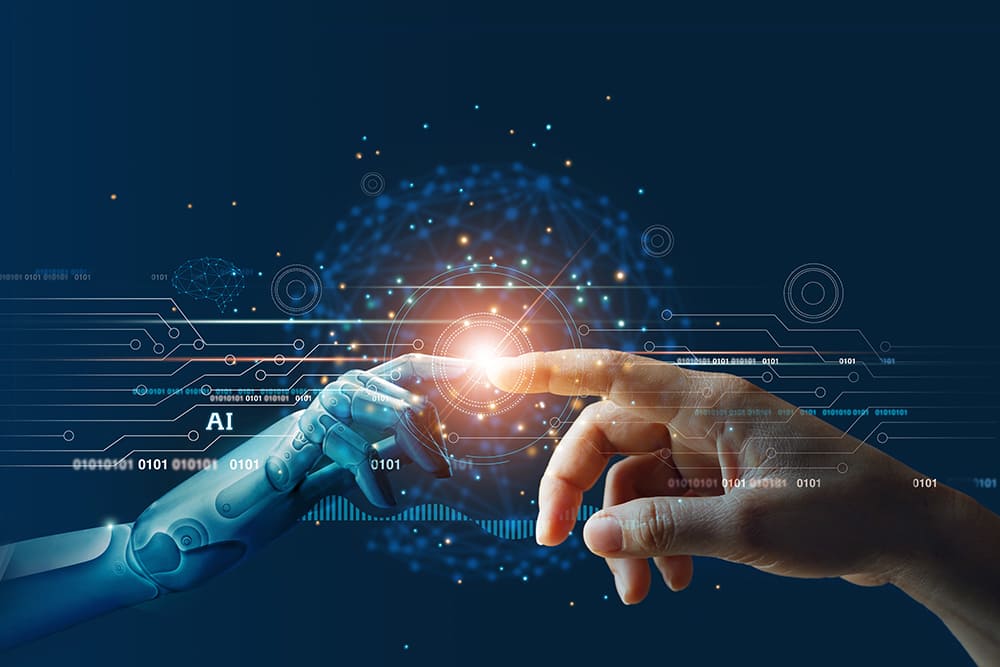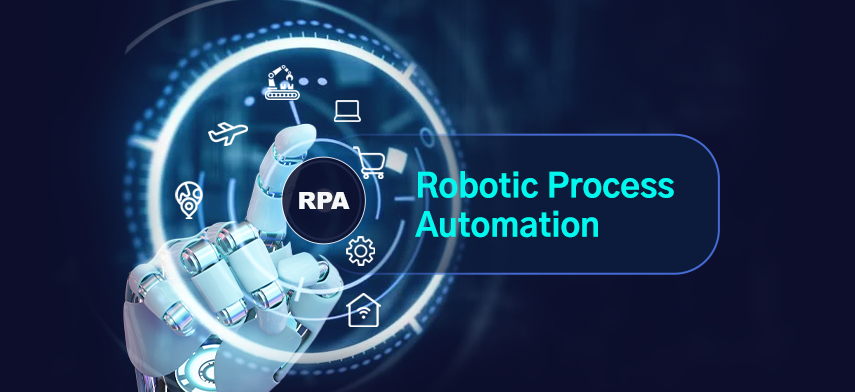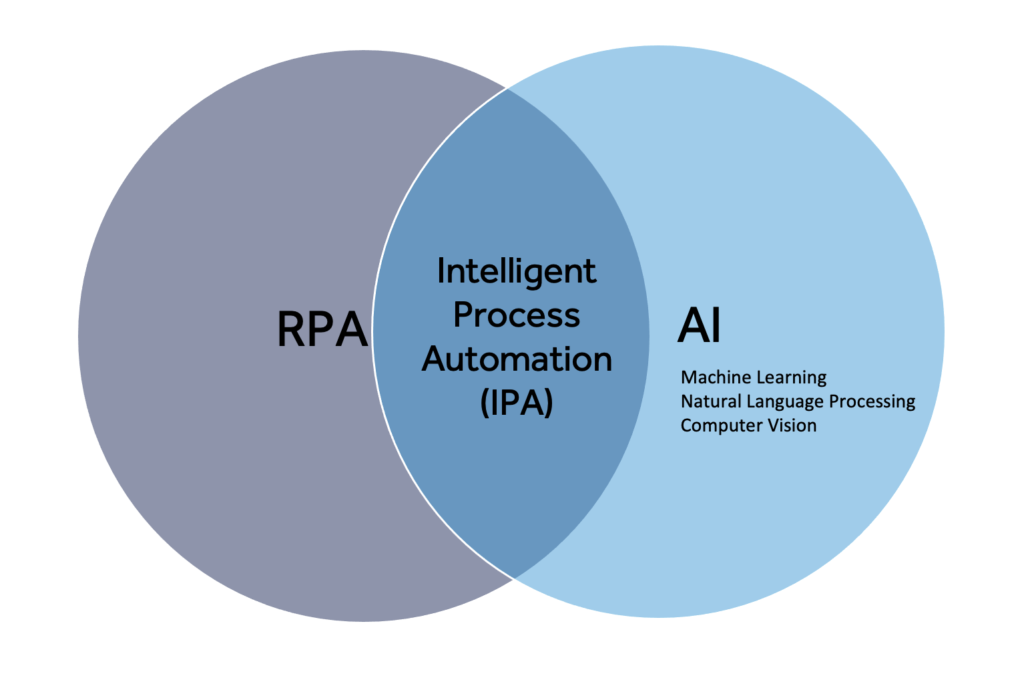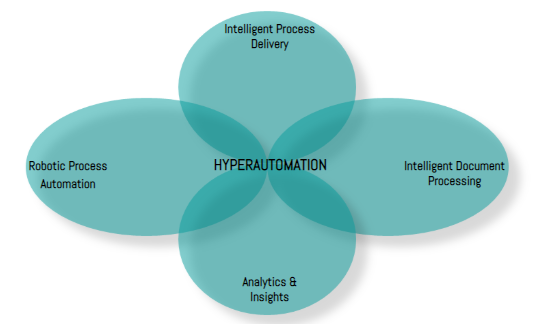Table of Contents
Automation Trends: What's on the Horizon?

Automation technology continues to evolve at a rapid pace, transforming industries and revolutionizing the way businesses operate. From artificial intelligence (AI) and machine learning to robotic process automation (RPA), organizations are embracing cutting-edge technologies to streamline processes, enhance efficiency, and drive innovation. In this article, we will explore the latest trends and advancements in automation, providing insights into what lies ahead on the automation horizon.
Artificial Intelligence (AI) and Machine Learning
Artificial intelligence and machine learning have emerged as game-changers in the field of automation. AI algorithms can learn from data, recognize patterns, and make intelligent decisions. Machine learning models enable systems to continuously improve and adapt to changing circumstances. As businesses leverage AI and machine learning, we can expect to see more advanced automation solutions that can analyze vast amounts of data, predict outcomes, and optimize processes.
Robotic Process Automation (RPA)

Robotic Process Automation has gained significant traction in recent years, enabling businesses to automate repetitive, rule-based tasks. RPA software robots mimic human actions, interacting with various applications and systems to perform tasks with speed and accuracy. RPA not only eliminates manual errors but also frees up human resources to focus on more strategic and creative work. One of the key advantages of RPA is its ability to integrate with existing systems and applications without the need for extensive coding or system changes. Bots can interact with user interfaces, extract data from different sources, perform calculations, and generate reports, just like a human operator would.
Organizations can leverage RPA in various areas, such as data entry, invoice processing, customer onboarding, claims processing, and many more. By implementing RPA, businesses can achieve faster processing times, improved accuracy, reduced operational costs, and enhanced compliance.RPA also offers scalability and flexibility, as bots can be easily deployed or reconfigured to adapt to changing business requirements. They can work 24/7, increasing operational efficiency and accelerating process completion times. It helps you to maximize productivity and manage your time better.
Overall, RPA is a powerful tool in the automation landscape, enabling businesses to streamline operations, improve productivity, and achieve higher levels of efficiency. It empowers organizations to optimize their processes, reduce errors, and enhance customer experiences, ultimately driving growth and success. As RPA continues to mature, we can anticipate more sophisticated bots capable of handling complex processes and integrating with AI capabilities.
Intelligent Process Automation (IPA)

Intelligent Process Automation combines AI, machine learning, and RPA to automate end-to-end business processes. IPA leverages AI technologies to understand unstructured data, make intelligent decisions, and adapt to dynamic scenarios. By incorporating machine learning algorithms and natural language processing, IPA can handle more complex tasks and enable organizations to achieve higher levels of automation and efficiency. It goes beyond simple task automation and enables businesses to automate
complex and cognitive processes that require human-like intelligence. By incorporating machine learning capabilities, IPA systems can
continuously learn from data and improve their performance over time.
One of the key benefits of IPA is its ability to handle ambiguity and exceptions. Unlike traditional RPA, which follows predefined rules, IPA can adapt and make decisions based on real-time data and context. It can handle dynamic processes that involve changing conditions, exceptions, and decision-making.
Intelligent Process Automation is particularly useful in areas such as customer service, data analytics, fraud detection, and compliance. For example, an IPA system can analyze customer inquiries, understand their intent, and provide personalized responses. It can extract insights from large datasets, identify patterns, and generate predictive analytics for informed decision-making. In the field of compliance, IPA can monitor regulatory changes, interpret complex regulations, and ensure adherence to compliance standards.
However, implementing IPA requires careful planning and consideration. It involves integrating AI technologies, training models, and establishing governance frameworks. Organizations need to identify suitable processes for automation, assess the feasibility of applying AI algorithms, and ensure proper data management and security.
Hyperautomation

Hyperautomation is an emerging trend in the field of automation that combines various technologies, such as robotic process automation (RPA), artificial intelligence (AI), machine learning (ML), and process mining, to automate and optimize business processes to the maximum extent possible. It aims to automate not just individual tasks or processes but entire end-to-end workflows across the organization.
At its core, hyperautomation focuses on identifying, analyzing, and automating repetitive, rule-based tasks that were traditionally performed by humans. It leverages AI and ML algorithms to process and interpret large volumes of data, make intelligent decisions, and continuously learn and improve over time.
Hyperautomation goes beyond traditional automation approaches by applying intelligent automation capabilities to a wider range of processes and integrating them seamlessly across different systems and departments. It enables organizations to automate complex and interconnected processes that involve multiple systems, data sources, and stakeholders.
One of the key benefits of hyperautomation is the ability to achieve significant operational efficiencies and cost savings. By automating repetitive tasks, organizations can free up employees’ time, allowing them to focus on higher-value activities that require creativity, problem-solving, and strategic thinking. Hyperautomation also helps reduce errors, improve accuracy, and enhance overall process quality.
Moreover, hyperautomation enables organizations to gain better visibility and control over their processes. By integrating various technologies and systems, it provides real-time insights into process performance, identifies bottlenecks and inefficiencies, and enables data-driven decision-making. It also facilitates compliance with regulatory requirements by ensuring consistent and auditable process execution.
Hyperautomation is particularly relevant in today’s digital era, where businesses face increasing demands for agility, scalability, and customer-centricity. It enables organizations to respond quickly to changing market conditions, deliver personalized experiences, and optimize their operations to stay ahead of the competition.
However, it’s important to note that hyperautomation is not a one-time implementation but rather an ongoing journey. It requires a strategic approach, strong governance, and continuous monitoring and improvement. Organizations need to assess their processes, identify automation opportunities, prioritize them based on value and feasibility, and develop a roadmap for implementation.
In conclusion, hyperautomation represents the next wave of automation, combining various technologies to achieve end-to-end process automation, intelligence, and optimization. By embracing hyperautomation, organizations can unlock new levels of productivity, efficiency, and agility, enabling them to thrive in an increasingly digital and competitive business landscape.
Intelligent Document Processing (IDP)

Intelligent Document Processing (IDP) is an advanced technology that leverages artificial intelligence (AI) and machine learning (ML) algorithms to automate the extraction, understanding, and processing of data from various types of documents. It enables organizations to handle large volumes of unstructured data efficiently, reducing manual effort and improving accuracy.
Traditionally, processing documents such as invoices, contracts, forms, and receipts required manual data entry and verification, which was time-consuming and prone to errors. IDP automates this process by intelligently extracting relevant information from documents and populating it into structured data fields or systems.
IDP utilizes optical character recognition (OCR) technology to convert physical or digital documents into machine-readable text. It then applies advanced algorithms to analyze the content and extract specific data points, such as customer names, invoice numbers, amounts, and dates.
The intelligent aspect of IDP lies in its ability to learn and improve over time. Through machine learning techniques, IDP algorithms can be trained to recognize patterns, adapt to different document layouts, and handle variations in data formats. This results in increased accuracy and efficiency as the system becomes more familiar with the types of documents and data it processes.
The benefits of Intelligent Document Processing are significant. By automating the extraction and processing of data from documents, organizations can streamline their operations, reduce manual errors, and accelerate the speed of data entry and validation. This leads to improved productivity, cost savings, and faster decision-making.
Furthermore, IDP enables organizations to gain valuable insights from their document data. By aggregating and analyzing the extracted information, businesses can identify trends, monitor performance, and make data-driven decisions. This can be particularly beneficial in areas such as finance, procurement, compliance, and customer service.
Intelligent Document Processing can be applied to various industries and use cases. For example, in healthcare, IDP can automate the extraction of patient data from medical records, enabling faster and more accurate processing. In banking and finance, IDP can automate the extraction of information from loan applications or financial statements, improving efficiency in underwriting processes.
To implement IDP, organizations typically use specialized software platforms or cloud-based solutions that offer pre-trained models and customizable workflows. These platforms allow users to define document templates, train the system on specific document types, and integrate the extracted data with other business systems or processes.
In summary, Intelligent Document Processing is a powerful technology that automates the extraction and processing of data from various types of documents. It enhances operational efficiency, accuracy, and data insights, enabling organizations to handle large volumes of unstructured data effectively. By adopting IDP, businesses can unlock the potential of their document-centric processes and drive digital transformation.
Intelligent Chatbots and Virtual Assistants
Intelligent Chatbots and Virtual Assistants are sophisticated automation solutions powered by artificial intelligence (AI) and natural language processing (NLP) technologies. They are designed to interact with users in a conversational manner, understand their queries or requests, and provide relevant information or assistance. Intelligent chatbots and virtual assistants have become ubiquitous in customer service and support. They are capable of simulating human-like conversations and can be integrated into various
communication channels such as websites, messaging apps, or voice assistants.
Intelligent chatbots and virtual assistants enable businesses to provide round-the-clock customer support without the need for human intervention. They can handle common inquiries, provide product information, assist with order tracking, or even troubleshoot basic technical issues. By automating these routine tasks, organizations can enhance customer experience, reduce response times, and free up human agents to focus on more complex or high-value interactions.
Moreover, these chatbots and virtual assistants are capable of learning and improving over time through machine learning algorithms. They can analyze user interactions, gather data on customer preferences and behaviors, and use that information to personalize responses and provide more accurate recommendations. This helps businesses deliver a more personalized and tailored experience to their customers, ultimately driving customer satisfaction and loyalty.
As the technology advances, we can expect chatbots and virtual assistants to become even more intelligent, understanding context, emotions, and complex requests.
Process Mining and Analytics
Process mining uses data analytics techniques to analyze event logs and extract valuable insights about how processes are executed in organizations. By visualizing process flows, identifying bottlenecks, and analyzing performance metrics, process mining allows businesses to optimize their workflows and improve efficiency. Combined with automation, process mining can provide valuable inputs for identifying automation opportunities and optimizing automated processes.
Analytics, on the other hand, involves analyzing the collected data to identify patterns, trends, and correlations. This allows organizations to gain a deeper understanding of their processes and make data-driven decisions for optimization and improvement.
Process mining and analytics enable organizations to:
- Identify process bottlenecks and inefficiencies: By visualizing the process flow and analyzing data, organizations can identify areas where processes are slowing down or causing delays.
- Discover process variations and deviations: Process mining helps to identify variations in process execution, uncovering potential compliance issues or deviations from standard procedures.
- Optimize process performance: By analyzing process data, organizations can identify areas for improvement, implement changes, and measure the impact of those changes on process performance.
- Monitor and measure process compliance: Process mining and analytics can help organizations ensure that processes are being followed according to defined rules and regulations.
- Enhance customer experience: By gaining insights into customer interactions and journey through the process, organizations can identify opportunities to improve the customer experience and increase satisfaction.
Overall, process mining and analytics provide organizations with valuable insights into their processes, enabling them to optimize efficiency, reduce costs, and enhance customer satisfaction.
Autonomous Vehicles and Drones
Autonomous vehicles and drones are cutting-edge technologies that are revolutionizing transportation and various industries.
Autonomous vehicles refer to self-driving cars, trucks, and other vehicles that can operate without human intervention. These vehicles leverage advanced technologies such as sensors, cameras, radar, and artificial intelligence to perceive the environment, make decisions, and navigate roads safely. They have the potential to transform the transportation industry by improving road safety, reducing traffic congestion, and increasing fuel efficiency.
Drones, also known as unmanned aerial vehicles (UAVs), are aircraft that can fly without a human pilot on board. They are equipped with various sensors, GPS, and advanced navigation systems to navigate and perform tasks autonomously. Drones have a wide range of applications across industries, including aerial photography and videography, delivery services, infrastructure inspection, agriculture, and public safety.
Key benefits of autonomous vehicles and drones include:
– Improved safety: Autonomous vehicles are designed to minimize human errors and accidents caused by factors such as fatigue or distractions. Drones can access hard-to-reach areas, reducing the need for human workers to perform dangerous tasks.
– Efficiency and productivity: Autonomous vehicles can optimize routes, reduce congestion, and increase fuel efficiency, resulting in cost savings and improved productivity. Drones can perform tasks more quickly and efficiently than traditional methods, reducing time and effort.
– Accessibility: Autonomous vehicles can provide mobility solutions for individuals who are unable to drive, such as the elderly or disabled. Drones can reach remote or inaccessible areas, enabling delivery services and critical infrastructure inspections.
– Data collection and analysis: Autonomous vehicles and drones can collect vast amounts of data through their sensors and cameras. This data can be utilized for various purposes, such as traffic analysis, infrastructure monitoring, or environmental assessment.
As technology continues to advance, autonomous vehicles and drones hold tremendous potential to transform industries, enhance efficiency, and create new opportunities. However, challenges such as regulatory frameworks, safety concerns, and public acceptance need to be addressed to ensure their successful integration into society.
Conclusion
Automation is an ever-evolving field with new trends and advancements emerging continuously. Embracing these automation trends can empower businesses to unlock new levels of productivity, efficiency, and innovation. By leveraging technologies like AI, RPA, and intelligent automation, organizations can streamline processes, drive growth, and stay ahead of the competition. Stay tuned to the latest automation trends, explore their potential applications, and embrace the future of automation to transform your business.
Remember, the world of automation is evolving rapidly, and it’s crucial to stay updated and adapt to the latest trends to reap the full benefits of automation for your business’s success.
